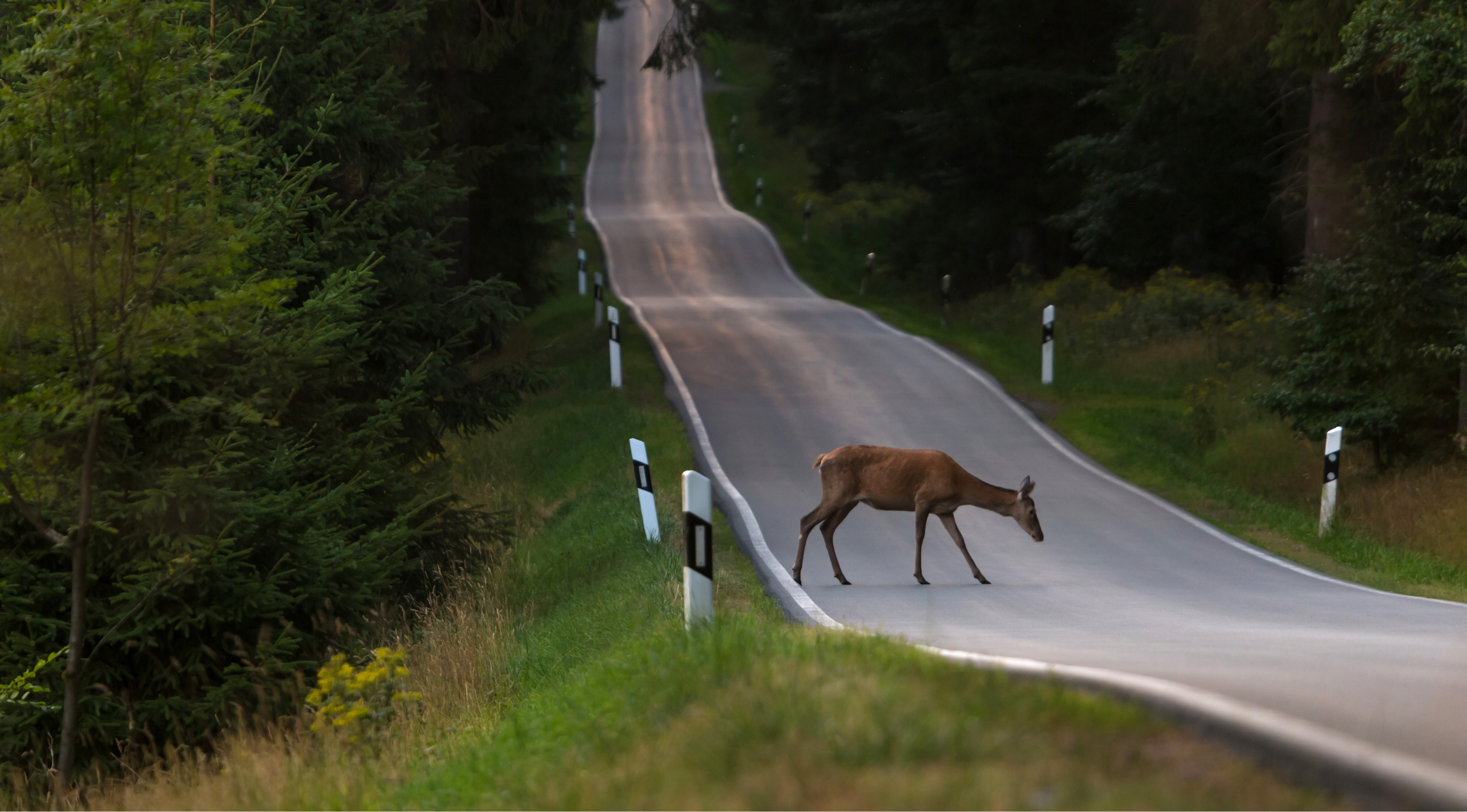
Blog
Habitat Connectivity: A Win for Biodiversity
March 12, 2024
Habitat connectivity – the ability for wildlife to move between significant patches of habitat – is crucial for sustaining wildlife and ecosystems. Habitat fragmentation could have lasting negative effects on wildlife populations, ecosystem functions, and nature access for millions of Americans. Wildlife is losing the ability to move, migrate, and disperse across landscapes as built infrastructure and increased development intersect habitat or cut off migration routes. Studies have shown that the best way to prevent biodiversity loss is to keep landscapes connected.
While habitat connectivity looks different from ecosystem to ecosystem, maintaining connectivity can look like undeveloped habitat corridors that connect key habitats or wildlife crossings which allow the safe passage of fauna across major roadways.
Benefits
- Climate Crisis Mitigation: Climate change is accelerating the rate of large-scale loss and/or fragmentation of habitat threatening species’ access to food, migration, genetic diversity, and overall resilience. Connectivity helps combat this by giving species room to move and migrate, promoting ecosystem biodiversity and preventing species extinction.
- Cost Effective: Wildlife-vehicle collisions cost over $8 billion annually. Wildlife crossings promote biodiversity while paying for themselves quickly in costs saved for emergency and medical assistance, property damage, and the value of animals lost.
- Improves Outdoor Recreation and Equity: Connectivity protects vital populations and habitats that also serve as spaces for outdoor recreation. Projects that reconnect fragmented habitats can also increase outdoor equity by helping to boost access to green spaces for nature-deprived communities.
State Action and Current Legislation
Over the past years, states have championed corridors and crossings. These efforts are now fueled by recent federal funding opportunities.
- The Bipartisan Infrastructure Law’s Wildlife Crossings Pilot Program (WCPP) allocates $350 million over five years to states, federal agencies, tribal nations, and other eligible applicants interested in studying the need for and constructing wildlife crossings.
- In addition to the WCPP, the Bipartisan Infrastructure Law offers over $1 billion across 15 existing, expanded, and new federal grant programs that support wildlife infrastructure.
- The America the Beautiful Challenge is a five-year, public-private grant program for locally-led ecosystem restoration projects including habitat connectivity, currently offering $119 million in the FY 2024 Request for Proposal.
Legislation has included studies of wildlife corridors, habitat connectivity infrastructure planning, funding opportunities, and protecting and reconnecting vulnerable and critical habitats. There are currently 15 states considering at least 33 pieces of legislation relating to habitat connectivity.
Current Bills with Substantial Movement:
- Florida C.S./S.B. 1638 (sent to Governor): Dedicates up to $100 million annually from the Seminole Tribe gambling compact for land purchases and conservation easements within the Florida Wildlife Corridor; Creates a grant program to assist local governments with trail maintenance within the Florida Greenways and Trails System, with priority given to trails within the Corridor.
- New Jersey S.3916 (enacted): Expands eligibility for wildlife fencing programs to farmers leasing farmland; clarifies eligibility and provides for uniform funding levels for grant recipients.
- New Mexico HB 2 (enacted): Appropriates $5 million from the General Fund to the Department of Transportation for the Wildlife Corridors Fund.
- New York S.4198B (passed Senate): Directs the department of transportation and the New York state thruway authority to identify sites along all highways, thruways and parkways in the state for wildlife crossings
- Utah SB 6 (enacted): Appropriates $1 million in non-lapsing funding to the Department of Transportation for Highway System Construction related to wildlife highway accident prevention.
- Virginia H.B. 309 (passed House and Senate): Requires the development of a Forest Conservation Plan including the identification of forest conservation threats, goals, funding opportunities, and priority areas with highest priority given to areas adjacent to wildlife corridors or large contiguous blocks of forest.
- Washington H.B. 2045 (sent to Governor): Authorizes counties, cities, and towns to accept money or property donations for the purpose of fish barrier removal; creates an adopt a fish barrier program; authorizes the recognition of donors that contribute to fish barrier removal.
- Wyoming SF 60 (signed by Governor): Appropriates $1 million from the Wyoming Wildlife and Natural Resource Trust Fund Income Account for projects related to fish passage and fish barrier removal.